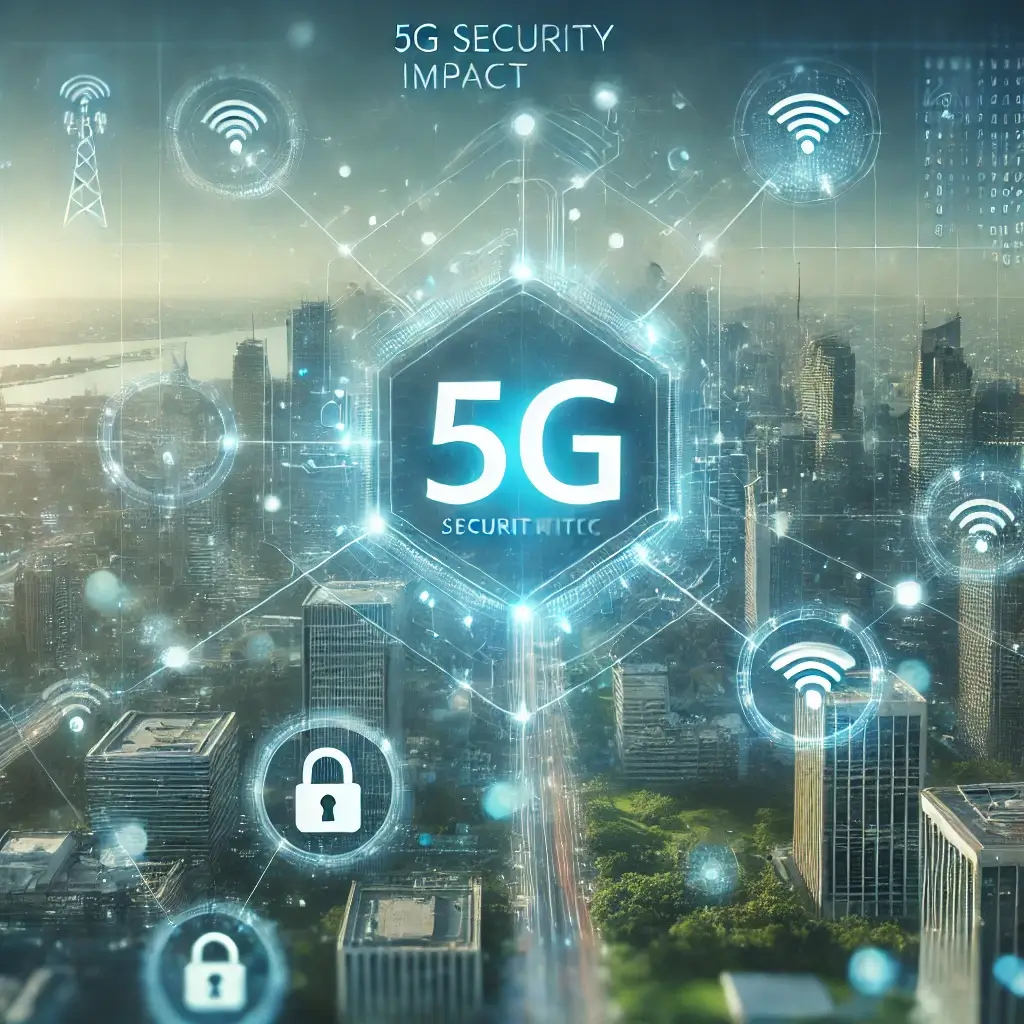Network technology combines hardware, software, and communication techniques to develop and sustain computer networks. It ensures smooth digital information flow, resource sharing, and application accessibility between computers.
In this digital era, where network security is crucial, tools like NordVPN play a vital role in safeguarding online activities.
Today, businesses heavily rely on these technologies for seamless in-office communication without being tethered to a specific location. From personal home setups to intricate corporate systems, network technologies pervade multiple facets of our daily lives.
To maximize the benefits of these technologies, consider exploring the Top 5 Networking Technologies of 2024.
They have streamlined and sped up numerous processes, making our interconnected world more efficient. Curious about how data effortlessly navigates between devices?
Join us as we explore the intricacies of network technologies!
Definition of Network Technology
Network technology is a family of technologies used to send and receive data across a computer network.
It enables data transmission between two or more computers, allowing them to communicate with each other over the Internet or other networks.
Network technology includes routers, switches, cables, wireless access points, and hubs. It also includes protocols such as Ethernet and TCP/IP that are used to set up connections between different types of devices on the network.
It can be used for many different purposes including :
- File transfer
- Media content streaming
- Email sending
- Remote access to applications and systems
- VoIP telephony
- Online gaming
- Instant messaging and communication services
Network technology is a cornerstone of modern connectivity, facilitating remote access to applications, securing data storage, and streamlining the distribution of diverse media forms. As an indispensable component of our daily lives, it underpins the operational backbone of businesses in our interconnected era.
This technology enables flawless data transmission over computer networks, guaranteeing a continuous and efficient flow of information. It fosters effective communication, which is crucial for the seamless operation of various sectors in the digital age.
Leveraging a combination of sophisticated software and robust hardware solutions, network technology orchestrates, regulates, and optimizes connections between computers and other devices. This integration ensures a cohesive and productive ecosystem, essential for achieving a high degree of connectivity and operational efficiency.
Experiencing Low WiFi Quality?
As we embrace the newer generations of WiFi, we enjoy faster and stronger signals than ever before. However, a common challenge faced is the limited reach of these advanced networks.
This is particularly noticeable in larger homes or offices, where walls and distances can weaken the WiFi signal, leading to frustrating dead zones and inconsistent internet speeds.
How Can a WiFi Booster Help?
A WiFi booster, also known as a WiFi range extender, is a simple yet effective solution to this problem. It works by amplifying your existing WiFi signal and extending its reach to cover larger areas. This means you can enjoy a strong and stable WiFi connection in every corner of your space, without the need to install additional wiring or complicated equipment.
For instance, the TP-Link AX3000 and AX5400 are excellent choices for those needing a powerful boost in WiFi coverage. Designed to handle multiple devices and high-bandwidth activities, they ensure that your internet experience remains seamless and uninterrupted, even in areas that previously had poor connectivity. The AX3000 offers speeds up to 3000 Mbps, while the AX5400 delivers an impressive 5400 Mbps, both providing incredibly fast connectivity at a very competitive price.
In my situation, I’ve opted for a TP-Link WiFi extender to stream movies while relaxing in the spa with my wife. Our home WiFi boasts 300 Mbps speed, yet it struggled to extend coverage to the backyard and basement. This led us to invest in a WiFi booster. Although my model is a bit older, it still supports speeds up to 300 Mbps. Practically, when I’m in the backyard, the speed hovers around 120 Mbps, which is sufficient for our needs.
Network Technologies: A Concise Overview
Wired vs. Wireless Networks
- Wired Networks: Characterized by their stability and high-speed capabilities, wired networks are the backbone of stationary applications. Predominantly used in settings where mobility is not a requirement, such as in corporate offices or data centers, they provide a reliable infrastructure for heavy data transmission.
- Wireless Networks: Wireless networks have transformed our interaction with digital spaces, offering unparalleled flexibility and mobility. Ideal for mobile devices including laptops, smartphones, and tablets, they enable seamless global connectivity, from cafes to remote workspaces, underscoring the evolution toward a more connected world.
Networks by Transmission Method
- Point-to-Point Network: Embodiment of simplicity, point-to-point networks utilize short-range radio signals to forge a direct connection between two endpoints. This setup is known for secure, high-speed data exchanges, making it suitable for direct links, such as those between buildings nearby.
- Multi-Point Network: In contrast, multi-point networks cater to complex scenarios by allowing multiple connections over a single network. This architecture is scalable, accommodating a growing number of devices, thus serving large organizations or crowded areas effectively while ensuring data security.
Networks by Scale
- Local Area Network (LAN): LANs are confined to a small area, like an office or home, providing high bandwidth for quick data sharing and access to shared resources, facilitating a collaborative environment.
- Metropolitan Area Network (MAN): A MAN extends over a city or large campus, connecting several LANs to support high-speed data transfer for services like city-wide internet access and large-scale conferencing.
- Wide Area Network (WAN): WANs cover vast areas, often spanning countries, linking multiple LANs to ensure global communication and data exchange across international offices.
- Personal Area Network (PAN): PANs support personal device connectivity within a close range, simplifying the interaction between personal gadgets like smartphones, headphones, and wearable technology.
- Virtual Private Network (VPN): VPNs offer secure, encrypted connections for accessing private networks over the internet, facilitating remote work and protecting privacy. NordVPN is highlighted as a user-friendly and secure choice, emphasizing its ease of setup and robust security features.
- Software-defined Network (SDN): SDNs revolutionize network management by separating the control and data planes, enabling dynamic resource management. This approach reduces manual configuration errors, enhances network responsiveness to changes, and improves cost efficiency by automating network operations.
Hierarchical Structure of Network Types
Key: Network Types & Descriptions
- Internet (Color: Black)
- Definition: Global Network System
- Description: A decentralized global system of interconnected computer networks. The vast “network of networks” that facilitates global communication and information exchange.
- WAN (Color: Blue)
- Definition: Wide Area Network
- Description: Connects multiple LANs, often on an international scale, allowing for data communication across vast distances. Commonly used by businesses to connect branches globally.
- MAN (Color: Red)
- Definition: Metropolitan Area Network
- Description: Encompasses a city or metropolitan region, integrating multiple LANs. Ideal for city-wide applications like CCTV and metropolitan Wi-Fi coverage.
- LAN (Color: Green)
- Definition: Local Area Network
- Description: Operates within a limited area, such as an office or home. Facilitates quick data transfers and seamless access to shared resources.
- PAN (Color: Yellow)
- Definition: Personal Area Network
- Description: Connects personal devices within an individual’s close proximity. Perfect for syncing devices like smartphones and wearable tech.
- VPN (Color: Grey)
- Definition: Virtual Private Network
- Description: Creates a secure, encrypted tunnel through the internet. Allows remote access to LANs and provides privacy during web browsing.
- Cloud Network (Color: Sky Blue)
- Definition: Cloud-based Network Technology
- Description: Facilitates data storage, access, and processing through cloud servers. Offers scalability and accessibility from anywhere with internet connectivity.
- Point-to-Point or P-P (Color: Dark grey)
- Definition: Point-to-Point Network
- Description: Establishes a direct, dedicated link between two devices. Favored for secure, high-speed data transfer across short distances.
- Multi-Point or M-P (Color: Purple)
- Definition: Multi-Point Network
- Description: Supports multiple users accessing data systems via a shared connection. Ideal for large organizations needing scalability and enhanced security.
- SDN (Color: Orange)
- Definition: Software-defined Network
- Description: Modernizes networking by centralizing command through software, allowing for dynamic adjustments and efficient resource allocation.
Understanding the Network Types Diagram
At the heart of the diagram lies the Internet circle, symbolizing the global backbone of interconnected networks. This centralized depiction reinforces the Internet’s pivotal role in networking and global communication.
Around this primary circle, smaller circles represent different types of networks:
- Cloud: Represents the modern infrastructure where data is stored and managed on remote servers and is accessed via the Internet. It highlights the evolving nature of network technology, bridging traditional hardware setups and virtual platforms.
- MAN (Metropolitan Area Network): Spanning a city or metropolitan area, it serves as a medium between LAN and WAN, interconnecting multiple LANs within a larger but confined geographical space.
- SDN (Software-defined Network): Embodies the evolution of network management, where software centralization enables dynamic resource allocation, improved responsiveness, and enhanced network flexibility.
- WAN (Wide Area Network): Signifies broader connectivity, linking LANs across vast distances, even continents. It serves as a primary mode of communication for multinational corporations and entities with widespread geographical operations.
Encircling the main Internet circle, the VPN circle is placed overlapping the Internet towards the North-East. This placement suggests VPN’s role as an overlay network, providing secure, encrypted tunnels within the broader Internet, essential for private and secure communication.
Lastly, connected to the LAN via uni-directional arrows are PAN, Point-to-Point, and Multi-Point networks. These arrows, pointing towards LAN, emphasize LAN’s central role in these networks. While PAN addresses personal space connectivity, Point-to-Point ensures direct, simple connections between two devices. In contrast, Multi-Point thrives in complexity, enabling multiple devices to share a single connection.
The bi-directional arrows linking the central Internet circle to the surrounding network types underline the reciprocal flow of data and interconnectedness of these networks in the vast digital ecosystem.
Diving into Cloud Network Technology
With the rapid advancements in technology, cloud networking has emerged as a groundbreaking approach to data storage, management, and access. Unlike traditional networking that relies on local servers, cloud network technology harnesses the power of remote cloud servers. This offers unparalleled scalability, flexibility, and accessibility from anywhere in the world.
Cloud networks streamline operations by reducing on-site infrastructure needs. They also provide a cost-effective solution, especially for businesses, as they shift from capital expenses for hardware to operational expenses with scalable subscription models.
Moreover, with the rise of IoT (Internet of Things) and an increasingly global workforce, cloud networking’s ability to provide seamless access across devices and geographies is paramount.
Interested in delving deeper? Dive into our comprehensive article on cloud network technology, where we unravel its intricacies, benefits, and what the future holds.
Visualizing Network Types: The Art of Network Diagrams
Visual aids are indispensable for understanding the complexities of network architectures. Network diagrams play a crucial role in illustrating the intricacies of how devices and systems interconnect.
If you’re keen to visualize the network technologies discussed in this article, here’s a quick guide:
- Preparation: Start with a clear understanding of your network’s structure.
- Inventory of components (routers, switches, servers).
- Connectivity details (wired vs. wireless).
- Network topology insights (logical and physical layouts).
- Security protocols in place.
- Choosing Your Tool: Your diagramming tool should be intuitive and collaborative.
- Lucidchart stands out for its specialized network shapes, symbols, and real-time collaborative features.
- Diagramming:
- Begin with the main components, placing them based on their real-world or logical positioning.
- Use standard icons for routers, servers, switches, etc.
- Connect them with lines/arrows, indicating data flow.
- Enhance with colors and labels for clarity.
- Review & Iteration:
- Double-check for accuracy.
- Collaborate! Gather insights from team members to ensure a holistic view.
- Update regularly to keep it relevant.
A well-crafted network diagram, much like a map, provides clarity in navigating and understanding the intricate lanes and intersections of the digital realm. Tools like Lucidchart make this journey both insightful and efficient.
Conclusion
In the digital age, understanding the complexities and varieties of network technologies is indispensable. From the physical distinctions of wired and wireless setups to the intricate designs of point-to-point and multi-point networks, our technological landscape is rich in diversity. Each network type, be it LAN, MAN, WAN, PAN, or the innovative realms of VPNs, Cloud Networks, and SDNs, serves a unique purpose tailored to specific scales and requirements.
As we explore the evolving landscape of network technology, it’s clear that the future is focused on more than just connectivity.
Agility, security, and adaptability are becoming essential.
Understanding the Top 5 Networking Technologies of 2024 is crucial for anyone, from personal users to global enterprises, to make informed decisions and fully harness the potential of our interconnected world.











